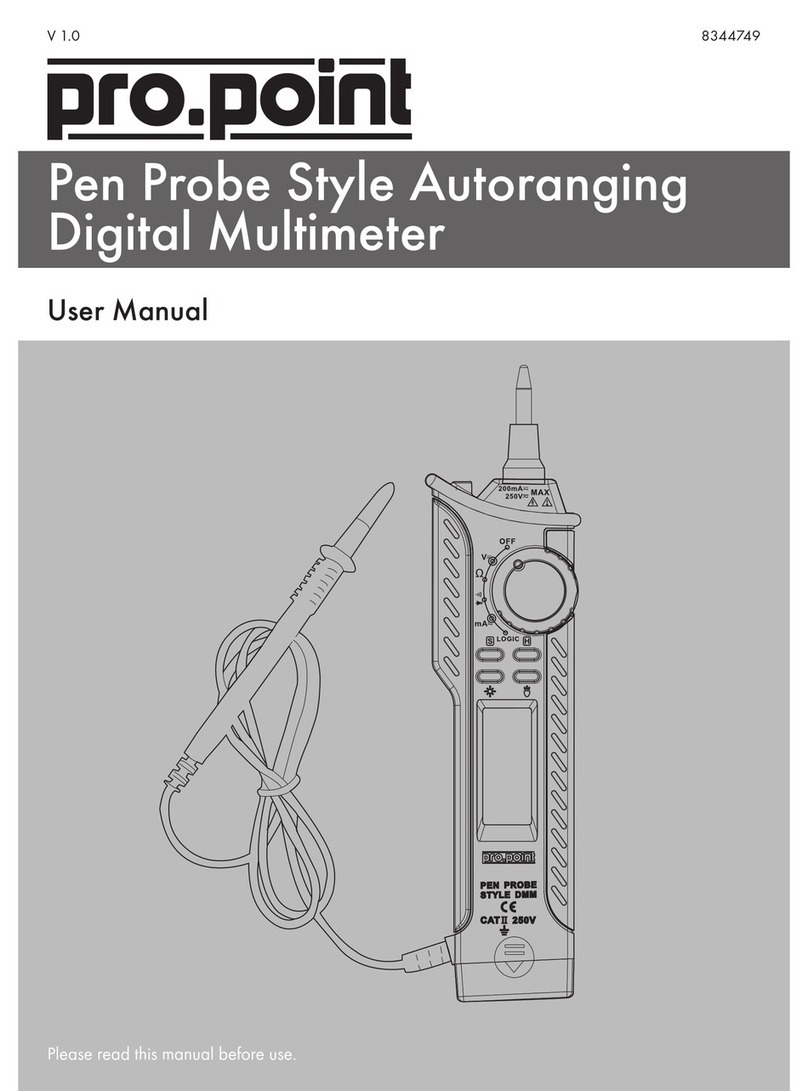
V1.0 Pen-Probe-Style Autoranging Digital Multimeter 9011495
Visit www.princessauto.com for more information 5
3. Stay alert, watch what you are doing and use your common sense.
Do not operate any machine or tool when you are tired, under the
influence of drugs, alcohol or medications.
This meter has been designed according to IEC-61010 concerning
electronic measuring instruments with a measurement category III (CAT
III 300V) and pollution degree 2. Measuring Category III (CAT III) is for
measurement performed on circuits directly connected to low voltage
installation (for example, measurements on household appliances,
portable tools, and similar equipment). Do not use this meter for
measurements within Measurement Category IV.
WARNING! To avoid possible electric shock or personal injury,
follow these guidelines:
1. Ensure that the batteries are correctly placed in the battery case
and connected properly.
2. Do not operate the meter with the battery cover or portions of the
case removed or loosened.
3. Do not use the meter if it is damaged. Before you use the meter,
inspect the case. Inspect the test leads for damaged insulation or
exposed metal. Check test lead continuity. Damaged leads should
be replaced.
4. Do not use the meter if it operates abnormally. Protection may be
impaired. When in doubt, have the meter serviced an authorized
service center.
5. Do not operate the meter around explosive gas, vapor, or dust.
6. Do not apply a voltage or current higher that the selected range’s
upper limit between terminals.
7. Before use, verify the meter’s operation by measuring a known voltage.
8. When measuring current, turn off power to the circuit before
connecting the meter to the circuit. Remember to place the meter
in series with the circuit.
9. Use caution when working above 30V AC rms, 42V peak, or 60V
DC. Such voltages pose a shock hazard.




























